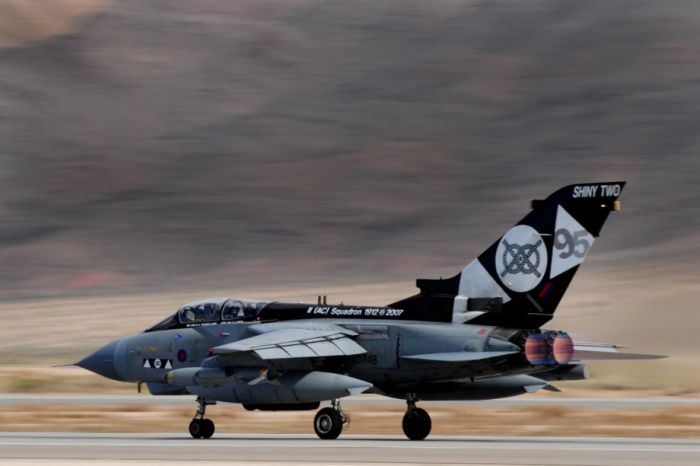|
|
Panavia Tornado Combat Aircraft
|
Strike variants have a limited air-to-air capability with AIM-9 Sidewinder or AIM-132 ASRAAM air-to-air missiles (AAMs); additionally the Tornado ADV is outfitted with beyond visual range AAMs such as the Skyflash and AIM-120 AMRAAM missiles. The Tornado is armed with two 27 mm (1.063 in) Mauser BK-27 revolver cannon internally mounted underneath the fuselage; the Tornado ADV was only armed with one cannon. When the RAF GR1 aircraft were converted to GR4, the FLIR sensor replaced the left hand cannon, leaving only one; the GR1A reconnaissance variant gave up both its guns to make space for the sideways looking infra-red sensors. The Mauser BK-27 was developed specifically for the Tornado, but has since been used on several other European fighters, such as the Dassault/Dornier Alpha Jet, Saab JAS 39 Gripen, and Eurofighter Typhoon.
The Tornado is capable of delivering air-launched nuclear weapons. In 1979, Britain considered replacing its Polaris submarines with either the Trident submarines or alternatively the Tornado as the main bearer of its nuclear deterrent. Although the UK proceeded with Trident, several Tornado squadrons based in Germany were assigned to SACEUR to deter a major Soviet offensive with both conventional and nuclear weapons, namely the WE.177 nuclear bomb, which was retired in 1998. German and Italian Tornados are capable of delivering US B61 nuclear bombs, which are made available through NATO.
• Engine
Britain considered the selection of Rolls-Royce to develop the advanced engine for the MRCA to be essential, and was strongly opposed to adopting an engine from an American manufacturer, to the point where the UK might have withdrawn over the issue. In September 1969, Rolls-Royce's RB 199 engine was selected to power the MRCA. One advantage over the US competition was that a technology transfer between the partner nations had been agreed; the engine was to be developed and manufactured by a joint company, Turbo-Union. The programme was delayed by Rolls-Royce's entry into receivership in 1971, the nature of the multinational collaboration process helped avoid major disruption of the Tornado programme. Research from the supersonic airliner Concorde contributed to the development and final design of the RB.199 and of the engine control units.
|
|









